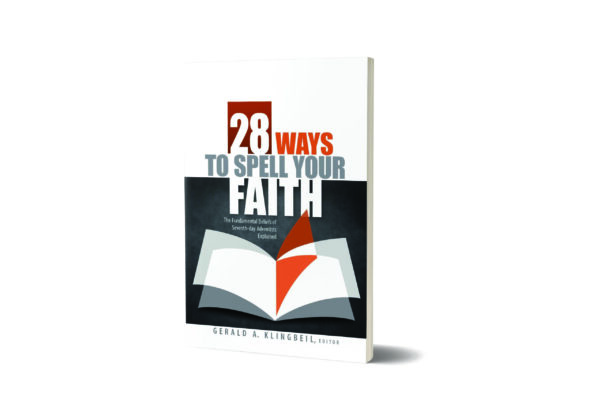If you were to play a word association game with almost any group of people, it’s unlikely that “joy” would be suggested in connection with theology. Ask any child how to spell faith, and they will tell you it’s a five-letter word. Both those realities are turned upside down in a new book edited by Gerald Klingbeil, 28 Ways to Spell Your Faith. In the introduction, Klingbeil explains how joy is an underused noun when it comes to theology, and that each of the 28 fundamental beliefs of the Seventh-day Adventist Church is just another way to spell faith.
In my experience, people talk about the 28 fundamentals, but when pushed, they don’t have a clear understanding of their purpose. Lothar Wilhelm’s “Big-Picture Theology,” reflecting on the preamble to the fundamentals, combined with Norman Gulley’s “Afterword,” provide both a comprehensive understanding and plant seeds of anticipation and excitement to dig further. As Gulley notes: The fundamental beliefs “are not considered a creed; instead, they form a succinct statement of the way Adventist understand truth” (p. 149). They are a tool to help us share biblical truths, relevant for today, with friends. This is one book in which it can be advantageous to read the introduction, preamble, and final chapter before going back to read the first fundamental.
Given that each of the chapters was written as a stand-alone article, by people representing a wide spectrum of age, geographical location, and experience, it’s a credit to the editor that the result is a homogenous whole. The variety of style and approach creates the written equivalent of an intricate patchwork quilt, in which the contrast provides depth, beauty, and greater understanding.
The fundamentals are interlocking, and each builds on the others and increases faith and understanding. As Gulley points out, they are best studied in their topical chronological order: God, Creation, Christ, salvation, church, final things. It’s also possible, however, to read chapters of special interest without feeling a lack of context.
Most chapters lead readers from a personal experience or an everyday incident to the biblical heart of the matter. As an aid to further study, the full fundamental belief is included in each chapter so that readers can appreciate the specific aspect the author is highlighting.
It should be noted that the book is not an in-depth study guide of the fundamentals. However, it’s helpful for Adventists wanting a fresh approach to familiar truths or an overview of something that is difficult to understand. A prime example of this was the chapter on the Trinity. It’s ideal to share with someone who has a biblical background but is unfamiliar with Adventist beliefs. The biblical basis for things that other Christians may find difficult, such as the heavenly sanctuary, gift of prophecy, and state of the dead, are clearly explained.
Does the book live up to expectations? Does it create joy? Yes! It creates joy, inspires further study, and teaches readers that faith can be spelled, at least, 28 different ways.
Gerald A. Klingbeil, ed., 28 Ways to Spell Your Faith (Silver Spring, Md.: Adventist Review Ministries and Review and Herald Publishing Association, 2020), 160 pages, US$15.99. Reviewed by Audrey Andersson, executive secretary, Trans-European Division.
To order the book call (800) 765-6955 in the U.S.A. or go to https://bit.ly/2CXH7en.



